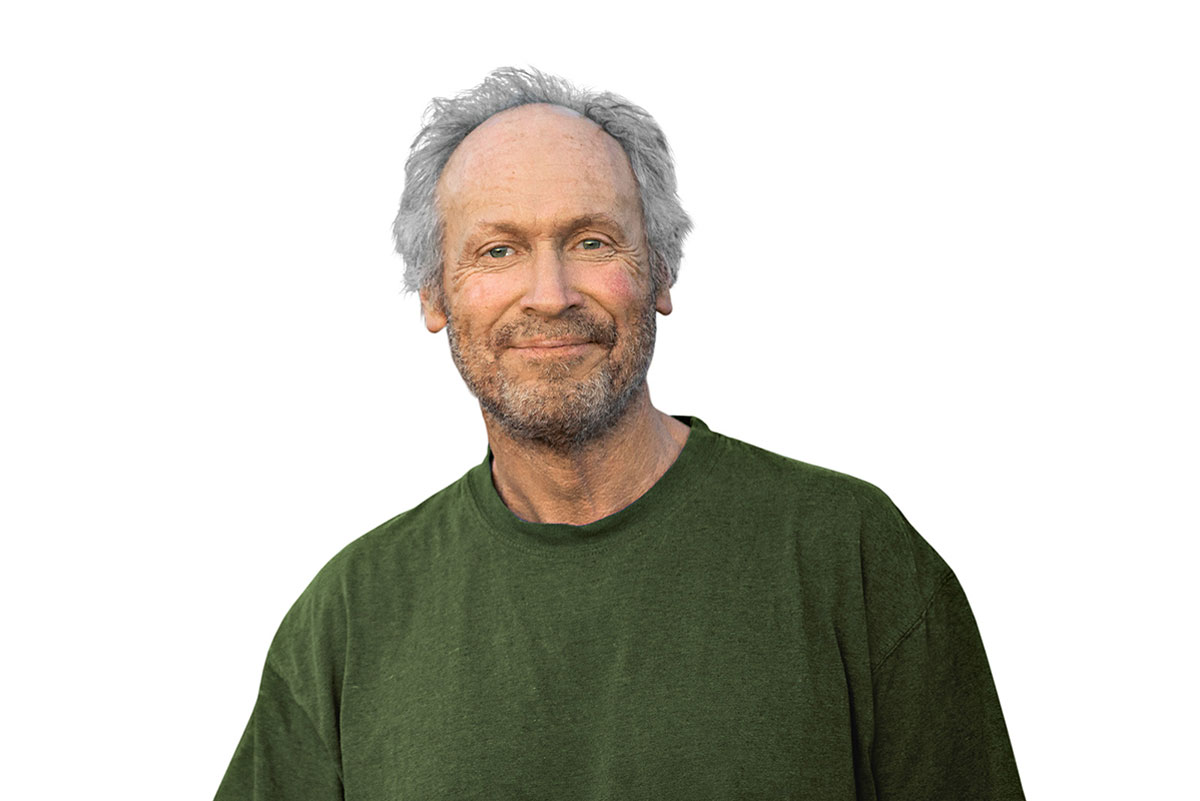Doug Chadwick’s stock as a swashbuckling eco-adventurer chronicling the planet’s flagship species is well-earned, having spent decades captivating audiences with stories about the plight of grizzly bears in the sun-scorched Gobi desert, the elusive wolverines of Glacier National Park and the snow leopards of Central Asia.
As a Whitefish-based journalist and wildlife biologist, Chadwick has written more than a dozen books as well as hundreds of articles about wildlife and wild places, most notably as a longtime contributor to National Geographic, where he has unfurled the mysteries of a suite of charismatic megafauna, including through his own research into mountain goat ecology and social behavior atop the Rockies, and explained why their existence should matter to us all.
So you’ll be forgiven if, upon learning that Chadwick’s most recent book centers on the interstitial organisms that occupy our most microscopic nether-spaces, you opt to sit this one out.
Be forewarned, however, that you’ll be doing yourself a disservice.
It turns out that Chadwick is just as adept at beguiling readers with accounts of the bacilli inhabiting their gut biome as he is in recounting tales of tangling with mountain goats and wolverines in Montana. In his telling of the universe, microbes are just as mesmerizing and magnificent as exotic megafauna, and even members of his audience with an aversion to the finer-grained sands of technical science will appreciate the magic he imbues in a world brimming with microscopic life-forms, and his mastery at translating complicated matters into popular prose.
Published by Patagonia, the outdoor apparel company whose commitment to environmental sustainability and stewardship helped foster a professional relationship with Chadwick more than a decade ago, his new book is called “Four-Fifths a Grizzly: A New Perspective on Nature that Just Might Save Us All.” In it, the veteran environmental writer presents an engaging series of personal essays that illustrate the awe-inspiring interconnectedness of nature, advocating that the path toward conservation begins with how we see our place in the world.
The book opens with a portrait of the author as a young boy as he first discovers the hidden secrets of the natural world, through the lens of a Bausch and Lomb microscope gifted to him by his father, and the revelatory experience of learning that life is, literally, everywhere.
“Every drop of pond water and pinch of soil I looked at was teeming with life, which is how I learned this very basic fact about life on earth, which is that most of it is invisible,” Chadwick said over a mug of coffee from his home in Whitefish. “For a lot of people, the natural world is a source of entertainment — it’s beautiful, it’s a sort of hobby — but we tell ourselves that we’re separate from it. The point of the book is, it doesn’t matter what you think, you are a symbiotic creature and you are not so much an individual as you think you are. We are embedded in this living world, through our microbial profile and our genes, and that just makes it all the more meaningful.”

Throughout “Four-Fifths a Grizzly,” Chadwick illustrates how human DNA is not all that different from any other creature’s, and that homosapiens bear a surprisingly close relationship to grizzlies, sharing 80% of their DNA, compared to 60% of a salmon’s, 40% of most insects, and so on and so forth.
“At the same time, our bodies are teeming with organisms, separate from ourselves but upon which we depend for survival,” Chadwick said.
Through a series of vignettes and easily accessible stories, Chadwick presents examples of successful recoveries of species and habitats, with the thought that “we really can save a whole lot in a hurry.”
If the premise seems like a departure from Chadwick’s bread-and-butter books about iconic species come under pressure, it is, to some degree.
“There are 8 billion humans on Earth today, which is about three times as many as when I was born, and we monopolize 83% of the habitable land space on the planet. And about 96% of the living weight, or biomass, of vertebrates — that’s animals with backbones, the big guys, the sexy species that we all pay attention to — consist of humans and their domestic livestock. So that leaves about 4% of the planet for all the other animals that we care about,” Chadwick said. “And I told myself I can’t keep writing books about one species at a time or one place at a time where they need more attention or care, which is kind of where we’re caught in conservation as we undergo a transformation of our seas and the air and the land because of a massive explosion of humans. Those resources are disappearing so quickly, and we can’t just keep rushing from crisis to crisis and putting our finger in the dike before another hole needs to be plugged somewhere else. That’s not going to cut it. So I wanted to write about how we think about ourselves and how we think about ourselves in relation to nature, and I wanted to try and change people’s view of us as separate from and superior to and kind of liberated from nature. We tend to think of ourselves as being entitled to do whatever we want, as much as we want for as long as we want. And we can’t keep thinking like that.”
To read an excerpt of “Four-Fifths a Grizzly,” visit the Patagonia website here, and purchase a copy here.
